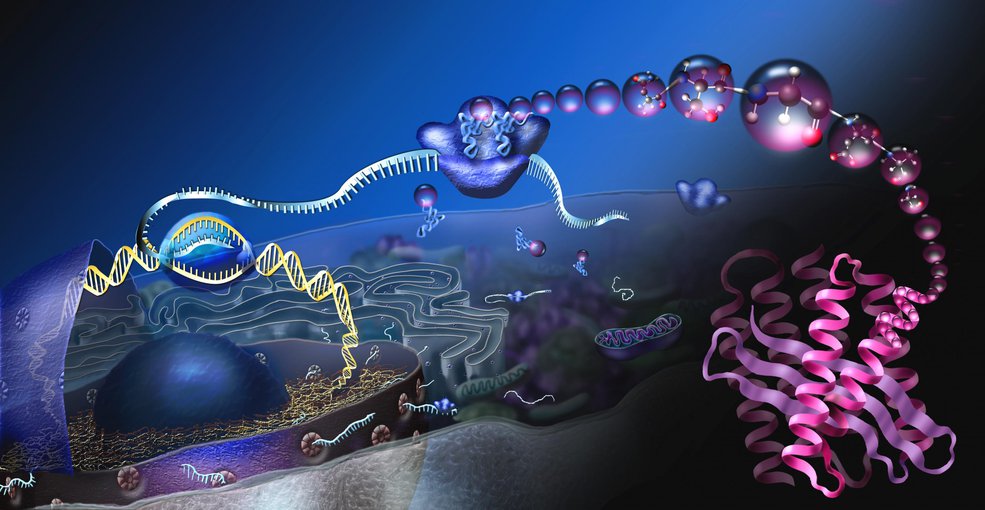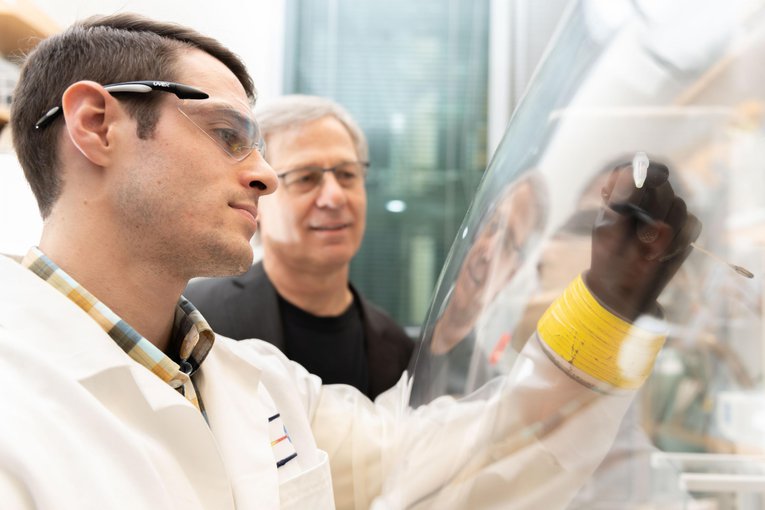
Nov. 16, 2018
Research Highlight
Stripping the Linchpins From the Life-Making Machine Reaffirms Its Seminal Evolution

The ribosome (upper middle) is the core of the translational system illustrated here. The system reads DNA via RNA and turns it into proteins to make all beings live.Image credit: National Science Foundation.
So audacious was Marcus Bray’s experiment that even he feared it would fail.
In the system inside cells that translates genetic code into life, he replaced about 1,000 essential linchpins with primitive substitutes to see if the translational system would survive and function. It seemed impossible, yet it worked swimmingly, and Bray had compelling evidence that the great builder of proteins was active in the harsh conditions in which it evolved 4 billion years ago.
The experiment’s success reaffirmed the translational system’s place at the earliest foundations of life on Earth.
Every living thing exists because the translational system receives messages from DNA delivered to it by RNA and translates the messages into proteins. The system centers on a cellular machine called the ribosome, which is made of multiple large molecules of RNA and protein and is ubiquitous in life as we know it.
“There’s nothing alive without ribosomes,” said Loren Williams, a professor at the Georgia Institute of Technology’s School of Chemistry and Biochemistry. “The ribosome is about the oldest and most universal part of biology, and its origins go very far back to a time not too long after Earth had formed and cooled.”
Click here to read the full article from Georgia Tech.

Marcus Bray, front, observes a sample inside a sealed atmospheric tent that has no breathable oxygen. The tent simulates atmospheric gas mixtures during Earth's earliest eon and allows researchers to work with samples by slipping their hands into leak-proof gloves. In the background, co-principal investigator and NASA astrobiologist Loren Williams looks on in his lab at Georgia Tech.Image credit: Georgia Tech / Allison Carter.
The study, “Multiple prebiotic metals mediate translation,” was published in the Proceedings of the National Academy of Science of the United States of America (PNAS). The work was supported by NASA Astrobiology through the Exobiology Program.